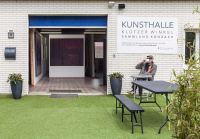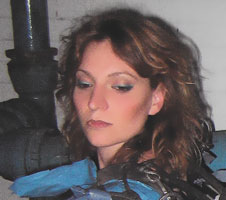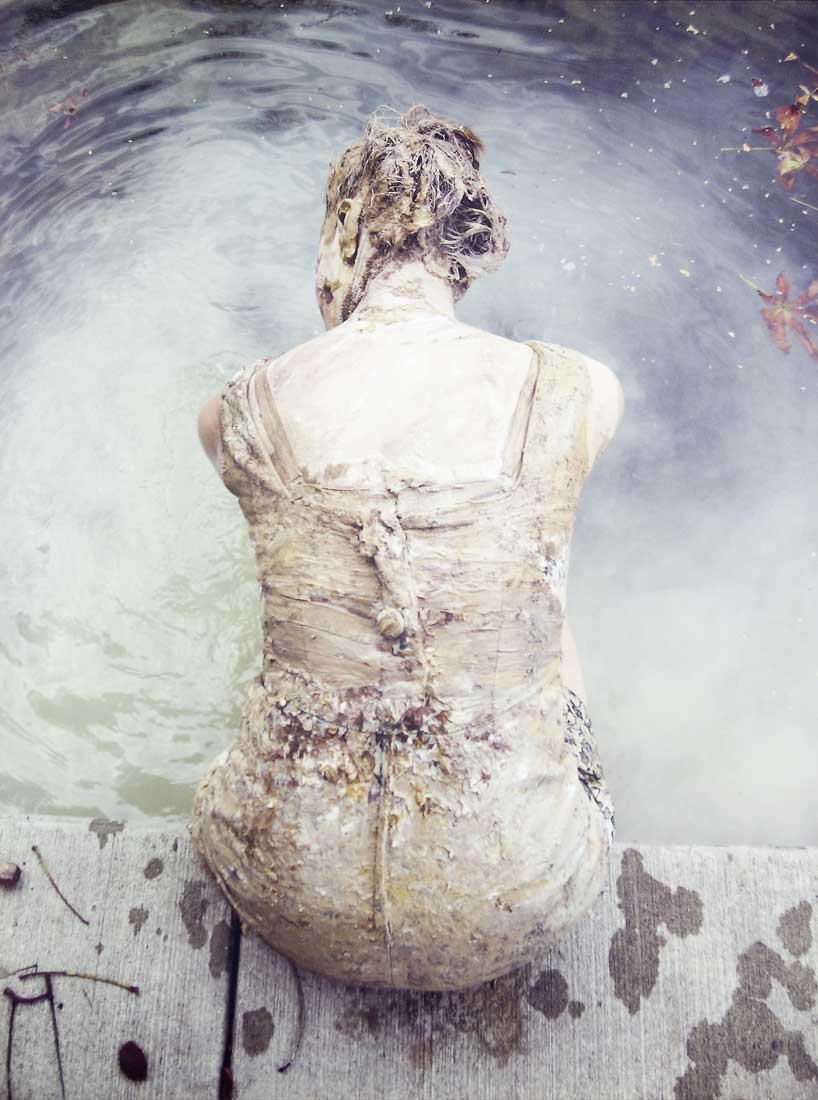Lives and works in Berlin, Germany
2005 Guest Student, Novia Scotia College of Art and Design, Halifax, NS, Canada
2000 BA, St. Olaf College, Northfield, MN
2008 Berliner Liste, Haus Cumberland, Berlin DE; Off the Wall, WILDE Gallery, Berlin DE; Toronto International Art Fair, Toronto ON; Inventory #1, WILDE Gallery, Berlin DE; Siren Sessions, Gallery Mittwoch, Berlin DE; Urban Affairs, Fredrichshohoe Breweri, Berlin DE; They Live, Lounge, Bloomfield Hills MI; Temporal, Gallery Project, Ann Arbor MI; One After Another, Detroit Industrial Projects, Detroit MI; Silver Medal Exhibition, Scarab Club, Detroit MI
2007 Show Me What You’re Working With, Forum Gallery, Bloomfield Hills MI; Cranbrook Video Festival, DeSalle Auditorium, Bloomfield Hills MI
2006 X-Change, Wayne State University, Detroit MI; Social Fabrication, Forum Gallery, Bloomfield Hills MI; Squeaky Clean, Forum Gallery, Bloomfield Hills MI
2005 Sculpture: What Is? Anna Leonowens Gallery, Halifax NS; Faculty Art Exhibition, Milton J. Weill Art Gallery, New York NY; Rock Paper Scissors, Fulton Street Gallery, Troy NY
2004 Thought Ejaculations, Bowery Poetry Club, New York NY; DUMBO Arts Festival, Superfine, Brooklyn NY
2001 Table Dances, Astoria Dance Center, Queens NY
2000 Dress, Steensland Art Museum, Northfield MN
1999 Something Old, Something New, Kelsey Gallery, Northfield MN
2008 Devito, Leyland. “Centrifugal Force” The Detroiter. Arts Review: June 13, 2008. Sousanis, Nick. “One After Another” The Detroiter. Arts Review: Jan 25. 2008. Jon Zemke, “The Buck Stops Here,” Model D magazine. Features: February 5, 2008. Elster, Isaac. “DIP uses art to create change,” The South End. Section A&E: January 23, 2008.
2006 Daimler Chrysler Merit Scholar
2000 Phi Beta Kappa Society; AWBA Scholarship; Viola Rossing Prize
Madeline Stillwell becomes an extension of her surroundings, embracing the wreckage she inhabits with tender acceptance, submitting her body to its promise of pain without a sound, neither flinching nor acknowledging any injury, despite her flesh’s confessions the contrary. Raw and exposed, Stillwell’s skin responds silently as she performs her pieces: throwing herself down cement stairs covered in rubble and muddy clay, weaving her body through conduits of broken, jagged furniture, or burrowing herself beneath the lonely debris left in a defunct, long-forgotten factory loft.
Whether performing for a camera or an audience, Stilwell maintains a poised serenity that belies the wounds inflicted on her figure by the setting of each act. Her beauty is amplified by her strength, her naked limbs flexing, exposing confident muscles defined by years of training, pushed to their physical capacity through each decisive movement as she navigates her stage. Her performances re-call the legacy and concerns of Marina Abromovic, specifically the pathos of self-inflicted pain in the public arena, the symbolism of ritualistic gesture, and the connotations of danger within conscious performance.
Stillwell chooses her materials with an inherent disregard for conventional comforts. Industrial duct-tape, shards of splintered wood, wire fences and rusted metal converge in her works act as an ironic playground, signifying quite literally the detritus of modern society and, metaphorically, the neglected recesses of the psyche. lt is not only this
intimate relationship between the body and pain that Stilweil conjures in her performative work (and which is too often dismissed as a feminist translation of giving birth), but rather her willingness to envelop herself in literal waste, the refuse she collects on-site and reconstructs to form her stage, that invokes in the viewer a kind of bewildered fascination, a romanticized repulsion that lingers long after the performance’s conclusion.
ln this sense, Stillwell’s work is also reminiscent of Yoko Ono’s infamous „Fiy“ video from 1970, in which the camera follows a fly as it traverses the artist’s naked body, pausing on her bare breast, moving slowly across the Iandscape of her figure. The implications of the fly and its typical habitat- garbage, rotting fruit or even carcasses – is evident and in stark visceral contrast to the seemingly vulnerable femininity and tender eroticism of the artist’s exposed flesh. As with Ono, Stillwell shares her scenes with objects whose associations contradict her very presence, Iet alone her co-existence. She creates harmony within manages to extract herself from its hazardous pull with the graceful gestures of a ballerina and the physical agility of an acrobat. Her work thus escapes the trappings of feminism without sacrificing the eloquence of her gender and ultimately serves as a dramatic reminder of the beauty inherent in even the most neglected or potentially harmful of spaces, whether literal or merely fabrications of our all·too-often injured psyches.
Emilie Trice




